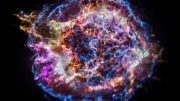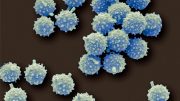
The researchers found that UV exposure makes human tissue more likely to tear under pressure. This means that sun-damaged skin is more prone to cracking and chapping, leaving deeper layers vulnerable to infection. Credit: David Freud
Scientists at Stanford University examined how varying doses of UVB radiation changes the protective functions of human skin, finding that beyond DNA damage and cancer risk, UV rays also change the way the outermost skin cells hold together and respond to strain.
Reinhold Dauskardt, professor of materials science and engineering at Stanford, has been studying skin for years. But when he sent his students to look for data on the mechanical properties of skin, they came back empty-handed. A lot was known about skin structure and disease, but few papers actually talked about its mechanical function – its ability to stretch and resist tension without tearing. “That motivated us to get more interested in the skin itself,” said Dauskardt.
He and his team, including doctoral student Krysta Biniek and postdoctoral researcher Kemal Levi, focused on the outermost layer of skin, the stratum corneum. It protects deeper layers from drying out or getting infected, and it’s also our first line of defense against UV radiation. Their study was published on October 1 in the Proceedings of the National Academy of Sciences.
They found that beyond the well-documented DNA damage and cancer risk, UV rays also change the way the outermost skin cells hold together and respond to strain.
Innovative methods
Ironically, the methodology behind these discoveries about skin damage originated in the field of photovoltaics, where sunshine is seen as a good thing. A grant from the U.S. Department of Energy supported Dauskardt’s research into the effects of prolonged UV exposure on materials – in particular, the materials that make up solar panels.
“Here we were looking at solar cells then suddenly thinking, ‘Hey, we should be looking at applying these techniques to skin,'” Dauskardt said.
The researchers subjected samples of human tissue to varying doses of UVB radiation. (UVB is the range of ultraviolet wavelengths that are largely absorbed by the epidermis and do not penetrate to deeper layers.) Then they tested the mechanical limits of the samples by putting them under different kinds of stress until they tore.
We’ve all experienced the sensations of dryness, stiffness or chapping after washing our hands with harsh soap, sitting by a space heater or under the air conditioning vent, or spending too long in the sun. Now we can begin to understand the mechanical properties behind those sensations. This is the first time that such methods have been applied to the study of skin.
The human fortress
Our body’s outermost defensive layer, the stratum corneum has a “brick-and-mortar” structure. The “bricks” in this model are dead cells called corneocytes, which are filled with a matrix of keratin filaments. Our skin’s rigidity – its ability to resist deformation under pressure – is due largely to the bonds between these strands of protein. The researchers were surprised to find that while the keratin was structurally changed by UVB exposure, the stiffness of the tissue wasn’t affected. When the skin samples were pulled apart, samples with greater UVB exposure were just as resistant.
The “mortar” of skin defense, on the other hand, took a beating from the UV rays. Between the corneocytes is a layer of lipids – fatty, waxy substances that hold the skin cells together and keep water from getting though. In a process called bulge testing, thin strips of skin were mounted over the opening of a cavity filled with pressurized water so they ballooned outward.
The team found that UV exposure increased the tissue’s tendency to absorb water and loosened the bonds between the lipids, making the tissue more likely to tear under pressure. This means that sun-damaged skin is more prone to cracking and chapping, leaving deeper layers vulnerable to infection.
In another technique borrowed from materials science, the researchers used a double cantilever beam model to test the cohesive properties of skin. Imagine restaurant chopsticks being pried open, but with a tissue sample glued into the region that gets torn apart. UV damage made the individual corneocytes separate more easily, especially in deeper layers of the stratum corneum.
This result suggests that another component of the “mortar,” proteins called corneodesmosomes, were also being damaged. These proteins are crucial to desquamation – the process of shedding dead skin cells, which allows us to replace the entire stratum corneum every two to four weeks. While the long-term impact of UV exposure on the desquamation mechanism has not been studied yet, damage to corneodesmosomes could mean deeper, lasting damage to the skin’s protective abilities.
Double the damage
All this rigorous stress testing revealed a grim fact: The sun takes a dramatic toll on our mechanical barrier function.
“UV exposure doesn’t just make the stratum corneum weaker,” said Dauskardt. “It also increases the actual stresses that cause the stratum corneum to fail. So it’s sort of a double-whammy, which we didn’t expect.” In other words, UV radiation introduces more force that drives skin cells apart while making the cells more helpless to resist.
This double threat is especially relevant to public health, as global climate change will gradually change the way people interact with the sun. The spectrum of sunlight that penetrates to Earth’s surface is increasing, while warmer temperatures cause people to wear less clothing and make them more vulnerable.
Mechanical testing is also confirming the vital importance of wearing sunscreen to protect the skin’s integrity.
“It’s totally cool,” said Dauskardt. “You put a sunscreen on the sample and it causes a huge change in the way the skin is affected.” This line of research offers a straightforward strategy for finding the best protection. These methods can quickly and accurately model how different sun protection products affect the skin’s mechanics. Dauskardt has already started comparative testing of sunscreens and thinks the work could be relevant in settling a currently raging debate about which types are most effective.
Dauskardt said the project is an example of breakthrough results arising from unlikely cooperation. “What’s so cool about bioengineering research today is that we’re taking medical challenges and looking at them with current engineering and scientific methods. This whole interdisciplinary approach is incredibly powerful, and you never know what it’s going to reveal.”
Reference: “Solar UV radiation reduces the barrier function of human skin” by Krysta Biniek, Kemal Levi and Reinhold H. Dauskardt, 1 October 2012, Proceedings of the National Academy of Science.
DOI: 10.1073/pnas.1206851109









Be the first to comment on "Stanford Scientists Examine How UV Radiation Affects the Protective Functions of Human Skin"